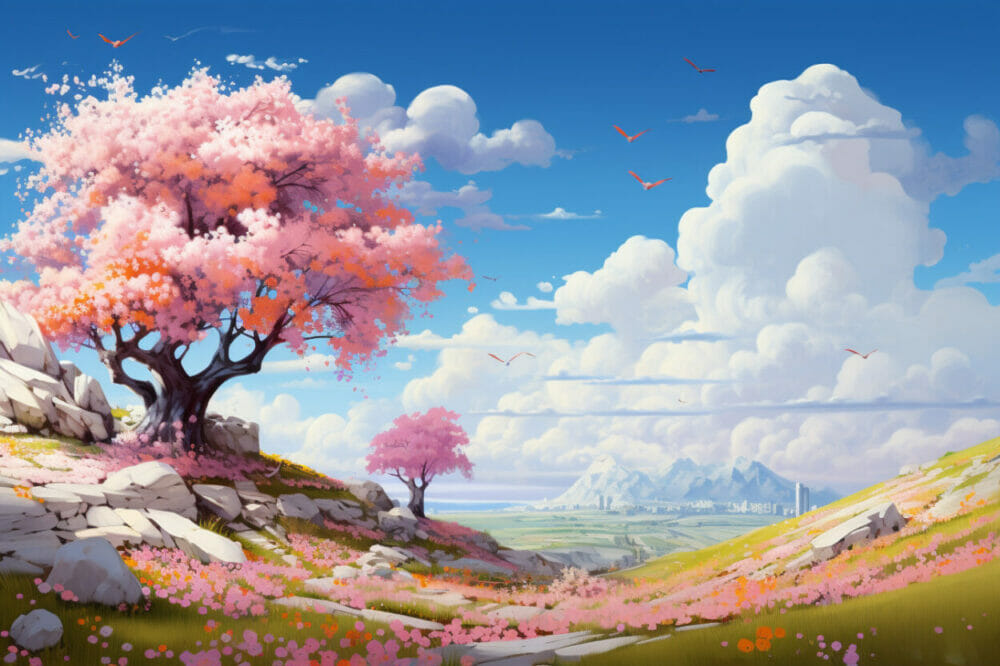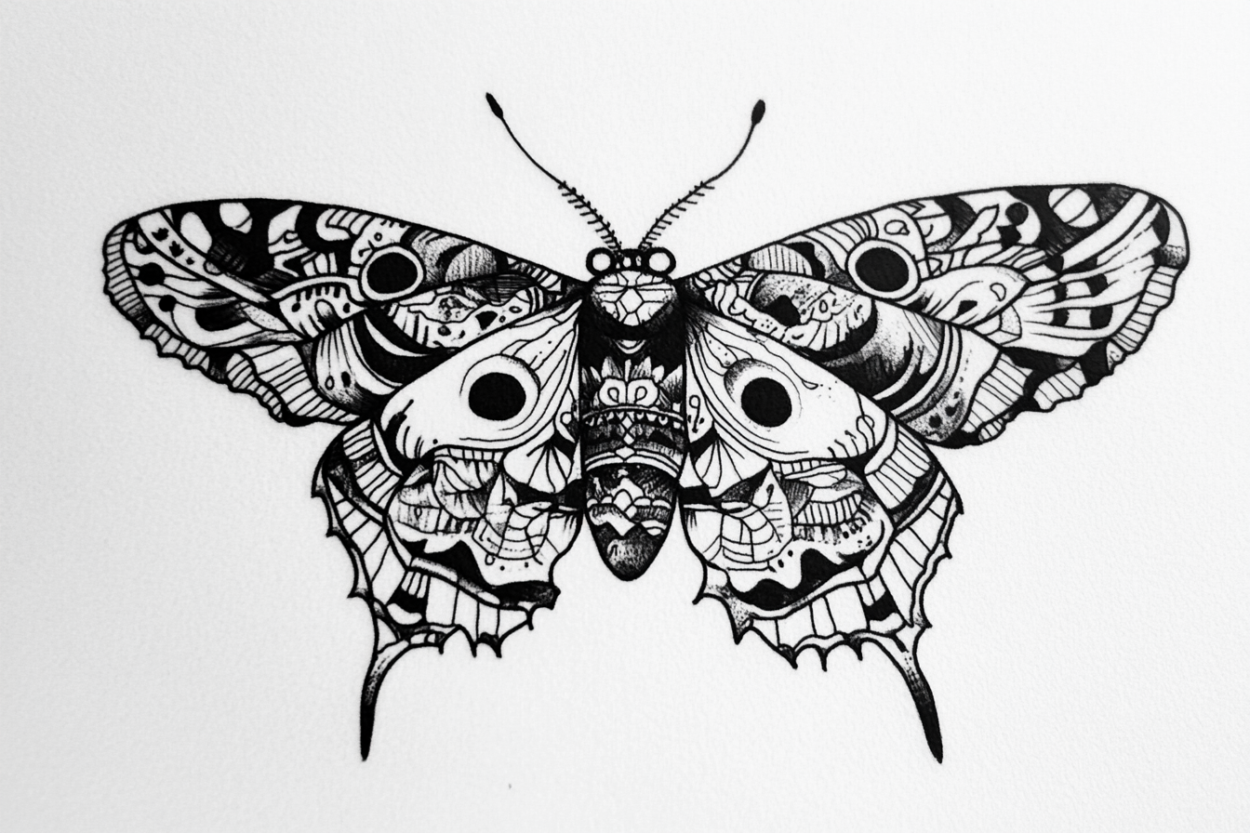Spring Symbolism in Cultures and Arts Around The World
Spring is like nature’s big, colorful comeback party after the cold winter. Everything wakes up in a burst of colors and sounds. Flowers bloom, filling the air with sweet smells, and trees get dressed in pretty pink, white, and green. Spring is like a reminder that life keeps going, with hope and positive change. Its beauty isn’t just about pretty sights but also the feeling of starting anew and enjoying life.
In this article, let’s dive into the wonderful spring symbolism. We’ll look into what these symbols mean, sharing stories that show how people from various cultures associate hope and new beginnings with spring.
1. Renewal

Spring feels like nature pressing the reset button. After winter’s stillness, everything bursts back to life—trees grow new leaves, flowers bloom, and the world turns green and vibrant again. It’s a season of fresh starts, with longer days and warmer weather waking everything up, including us.
Culturally, spring has always been tied to renewal and rebirth. Festivals like Nowruz (Persian New Year), Easter, and Japan’s cherry blossom celebrations highlight the season’s themes of shedding the old and embracing the new. These traditions remind us that spring is a universal symbol of hope and fresh beginnings.
In films, spring often sets the stage for transformation. Whether it’s a blooming romance or a character’s personal growth, filmmakers use the season’s energy to mirror stories of renewal and change. Spring’s symbolism captures the spirit of starting over, both in nature and in life.
Read More: Winter Symbolism and Meaning
2. Rebirth

Spring symbolizes rebirth, reflecting life’s cycles and nature’s transformations through the seasons. After winter’s stillness and dormancy, spring brings a fresh start, full of life and renewal.
In nature, winter strips trees of their leaves, quiets plants, and leaves the landscape bare. But with spring, everything comes back to life—trees grow new leaves, flowers bloom, and the world wakes up. This transformation shows the resilience of life, reminding us that even after tough times, renewal and growth are always possible. Spring is a promise of new beginnings and the endless cycle of life.
Read More: Phoenix as a Symbol of Rebirth
3. Growth

As winter transitions to spring, temperatures rise, creating a more conducive environment for growth. Warmer weather prompts physiological changes in plants, signaling them to come out of dormancy. Longer days and increased sunlight also play a crucial role in growth during spring. Sunlight is essential for photosynthesis, the process through which plants convert sunlight into energy to fuel their growth.
The thawing of frozen soil is another key factor. During winter, the ground may freeze, restricting root movement and nutrient absorption. As the soil thaws in spring, it becomes more hospitable for plant roots, allowing them to access essential nutrients.
Read More: 20+ Symbols For Growth Around The World
4. Hope

The visible transformation of nature during spring, with the blossoming of flowers, the budding of trees, and the return of vibrant colors, symbolizes renewal and the triumph of life over the dormancy of winter. This renewal becomes a metaphor for hope, suggesting that after challenging times, there is the promise of a fresh start.
The painting “Primavera” by Sandro Botticelli is a classic representation of spring, featuring lush vegetation, blooming flowers, and allegorical figures that evoke a sense of rejuvenation and hope.
Read More: Symbols of Resilience in Arts and Cultures
5. Fertility

Spring is marked by the blossoming of flowers, and this vibrant display of colors is often seen as a symbol of fertility. The pollination process, where plants produce seeds for the next generation, contributes to the idea of abundance and fertility.
Across various cultures and religions, spring festivals often incorporate symbols of fertility. Eggs, for instance, are a common fertility symbol and are prominently featured in celebrations like Easter.The Ukrainian tradition of decorating eggs, known as Pysanka, is a form of art that intricately illustrates symbols of fertility, growth, and the cycle of life.
Read More: The Law of Abundance
6. Fresh Starts

Lunar New Year, also known as the Spring Festival, is a significant celebration observed in various Asian cultures. Leading up to Lunar New Year, families engage in thorough cleaning of their homes. This practice is not just about physical cleanliness but is also symbolic of sweeping away the old and making space for new and positive energy. It signifies the bid farewell to the past year and the welcoming of a fresh start in the coming year.
Lunar New Year is a time for families to come together and celebrate. The reunion dinner on the eve of the Lunar New Year is a special and symbolic occasion, emphasizing the importance of family unity. Sharing a meal signifies abundance and the hope for a prosperous and harmonious year ahead.
7. Joy

The warmer weather and longer days encourage people to engage in outdoor activities. Whether it’s gardening, hiking, picnics, or simply spending time in nature, these activities have been linked to improved mood and reduced stress.
Interestingly, the human body’s response to changing seasons is known as Seasonal Affective Disorder (SAD). While some people experience a form of “winter blues,” the arrival of spring often brings relief and a boost in mood.
Spring Symbolism in Greek Mythology

In Greek mythology, the story of Persephone and Demeter is a symbolic representation of the changing seasons, with spring being a prominent theme.
Hades, the god of the underworld, abducted Persephone and took her to the underworld. Demeter, Persephone’s mother and the goddess of the harvest, mourned her daughter’s absence, causing the earth to wither and die.
Zeus intervened, and a compromise was reached. Persephone would spend part of the year in the underworld with Hades and the rest with her mother. When Persephone returns to Demeter, the earth blossoms anew, symbolizing the arrival of spring and the rebirth of nature.
Spring Symbolism in Egyptian Mythology

In ancient Egypt, the significance of spring was closely tied to agricultural practices and the annual cycle of planting and harvesting. Spring marked the beginning of the agricultural season, and the Egyptians engaged in vital farming activities to ensure a successful harvest that would sustain them throughout the year until the next spring. This connection between spring and agriculture was reflected in the mythology and worship of Osiris, the god associated with the season.
In myths and stories about Osiris, he was often portrayed as a benevolent and wise ruler who cared for the well-being of humanity. His teachings on agriculture were seen as a gift to the people, providing them with the means to cultivate the land, grow crops, and ensure a stable food supply. Osiris symbolized the cyclical nature of life, death, and rebirth, mirroring the agricultural cycle of planting seeds, their growth, and the eventual harvest.
Spring Symbolism in Chinese Culture

In Chinese culture, spring holds great significance and is associated with renewal, growth, and new beginnings. This symbolism is particularly pronounced during the celebration of the Chinese New Year, also known as the Spring Festival. Many rituals, customs, and cultural practices during the New Year festivities embody the spirit of spring symbolism.
Red and gold are prominent colors during Chinese New Year celebrations. Red is associated with good luck and prosperity, while gold symbolizes wealth. Homes and public spaces are adorned with red lanterns, couplets with auspicious phrases, and other decorations to attract positive energy and good fortune.
Colorful dragon and lion dances are popular performances during Chinese New Year parades and celebrations. These traditional dances are believed to bring good luck, drive away evil spirits, and symbolize the awakening of life. The dynamic and lively nature of these dances aligns with the vibrancy and energy associated with spring.
Conclusion
In conclusion, the spring symbolism transcends geographical boundaries. From the vibrant celebrations of renewal during the Chinese New Year to the allegorical tales of rebirth in Greek mythology, spring holds a universal significance that resonates deeply with humanity. The emergence of life, the vibrant burst of colors, and the promise of new beginnings are recurring themes that echo through various traditions and rituals. It’s a way of expressing the enduring spirit of humanity and our ongoing search for positive change and a brighter future.








